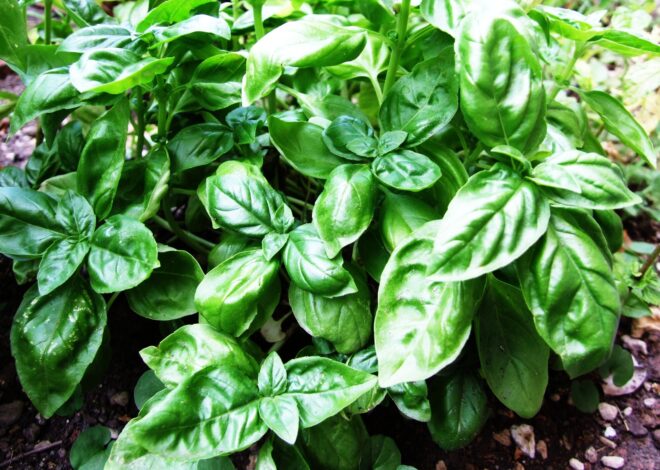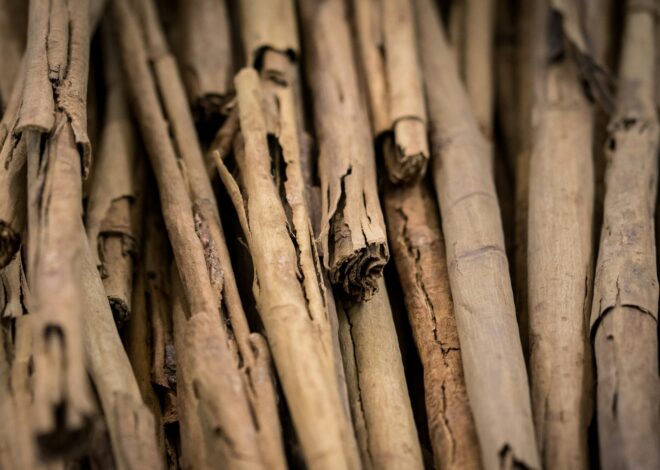
10 Native American Medicinal Plants
As we explore the fascinating realm of Native American medicinal plants, you’ll find time-tested wisdom intertwined with natural beauty—a journey worth taking for anyone interested in holistic health or simply looking to connect more deeply with nature’s bounty.
For centuries, Native American tribes have harnessed the healing power of nature. Their knowledge of medicinal plants goes beyond mere folklore; it is an intricate part of their culture and spirituality. In a world where modern medicine often takes center stage, these ancient practices remind us that some remedies are right under our feet, waiting to be discovered.
With deep respect for the earth and its offerings, Native American healers have cultivated a rich understanding of various plants and their therapeutic properties. This connection not only promotes physical health but also nurtures emotional and spiritual well-being.
The Importance of Medicinal Plants in Traditional Healing
Medicinal plants have been at the heart of traditional healing practices for centuries. They represent a deep connection between nature and wellness, offering remedies that are both effective and holistic.
These plants provide not just physical healing but also emotional and spiritual support. Many Indigenous cultures believe in the energy of plants, seeing them as vital partners in health.
Using medicinal plants fosters a sense of community as knowledge is often shared through generations. This oral tradition strengthens cultural identity while promoting natural healthcare solutions.
Moreover, these plants serve as reminders of our dependence on nature’s resources. In an era increasingly dominated by synthetic pharmaceuticals, returning to herbal wisdom can enhance well-being without harsh side effects.
The rich variety among these species illustrates the importance of preserving biodiversity for future generations to explore their potential benefits fully.
How Native American Medicinal Plants Are Used
Native American medicinal plants are used in various ways, reflecting the deep connection between nature and health. Traditional healers often prepare these plants as teas, poultices, or tinctures to harness their healing properties.
For example, roots may be boiled to create a potent infusion that alleviates ailments. Leaves can be crushed and applied topically for relief from wounds or skin irritations.
Ceremonial practices also play a significant role. Some plants are burned as smudging materials to purify spaces and promote spiritual wellness. Each plant carries its unique significance within cultural rituals.
The wisdom of using these natural remedies has been passed down through generations. This knowledge forms an integral part of Native American identity, intertwining health with tradition and community well-being. It’s not just about physical healing; it’s about restoring balance and harmony with nature’s gifts.
The Top 10 Native American Medicinal Plants
#1. Ginseng
Ginseng is a treasured herb in Native American medicine, known for its remarkable healing properties. This adaptive plant thrives in diverse environments and has been utilized for centuries.
Traditionally, ginseng roots are harvested and prepared as teas or tinctures. They are believed to enhance energy levels and boost overall vitality. Its unique ability to combat fatigue makes it a popular choice among herbalists.
The active compounds within ginseng, called ginsenosides, contribute to its medicinal effects. These compounds support immune function and may even aid cognitive performance. Many tribes appreciate this plant not just for physical health but also for mental clarity.
As modern research continues to explore the benefits of ginseng, many indigenous communities remain committed to passing down their knowledge about its uses through generations, honoring both tradition and nature’s wisdom.
#2 Sage
Sage holds a revered place in Native American medicine. Known for its cleansing properties, this plant is often used in spiritual rituals and ceremonies.
The leaves of sage can be dried and burned as incense, creating a purifying smoke that is believed to dispel negative energies. This practice, known as smudging, connects the user with ancestral traditions.
Beyond its spiritual uses, sage also offers medicinal benefits. It has antibacterial qualities, making it useful for treating wounds and infections. The tea made from fresh or dried leaves can soothe digestive issues.
In cooking, sage adds flavor while providing health benefits like anti-inflammatory properties. Its versatility makes it an essential herb both in the kitchen and beyond.
Whether you’re using it to enhance your meals or seeking spiritual clarity, sage embodies the wisdom of nature’s remedies.
#3. Echinacea
Echinacea, often recognized for its vibrant purple coneflower blooms, holds a special place in Native American herbal medicine. Traditionally used by various tribes, this plant is celebrated for its immune-boosting properties.
Native Americans would brew Echinacea roots and leaves into teas or tinctures to combat colds and infections. It was also applied topically to treat wounds and skin irritations. Its versatility makes it a staple in natural healing practices.
Modern research supports these ancient uses, highlighting Echinacea’s potential to reduce the duration of colds and flu symptoms. Many people today seek out supplements containing this powerful herb as part of their wellness routines.
Growing Echinacea is relatively easy; it thrives in well-drained soil with plenty of sunlight. Whether you’re looking to enhance your garden or incorporate traditional remedies into your lifestyle, Echinacea stands out as a remarkable choice among Native American medicinal plants.
#4. Yarrow
Yarrow, known scientifically as Achillea millefolium, is a remarkable herbal ally in Native American medicine. This hardy perennial thrives in diverse environments and has been valued for its healing properties across many indigenous cultures.
Traditionally, yarrow was used to treat wounds due to its natural antiseptic qualities. When applied topically, it helps stop bleeding and promotes faster healing. The leaves can be crushed and used directly on cuts or bruises.
Beyond wound care, yarrow is also celebrated for its ability to alleviate fevers and respiratory issues. Herbalists often brew it into teas that offer soothing effects during colds or flu.
The plant’s delicate flowers attract beneficial insects, making it a great addition to any garden focused on sustainability. Additionally, yarrow’s earthy aroma enhances the sensory experience of being close to nature while providing various health benefits too.
#5. Devil’s Club
Devil’s Club is an intriguing plant with a rich history in Native American medicine. Known scientifically as *Oplopanax horridus*, it thrives in the damp, shady forests of the Pacific Northwest.
This thorny shrub has been revered for its therapeutic properties. Traditionally, tribes used its roots and inner bark to create remedies for various ailments like arthritis and respiratory issues. The anti-inflammatory effects are particularly valued among herbalists today.
Harvesting Devil’s Club requires care due to its sharp thorns. Yet, those willing to brave the prickles find immense rewards in this powerful herb.
Its striking appearance adds beauty to any garden while serving practical uses. Many herbal enthusiasts celebrate Devil’s Club not only for its medicinal benefits but also for its cultural significance within Indigenous communities. Embracing this plant connects us with traditional healing practices that have stood the test of time.
#6. Aloe Vera
Aloe Vera is often revered as a miracle plant in Native American medicine. This succulent has been used for centuries for its soothing properties.
The gel-like substance found within its leaves offers relief from burns, cuts, and skin irritations. It’s packed with vitamins and minerals that promote healing and hydration.
Beyond topical applications, Aloe Vera also plays a role in digestive health. Consuming the juice can help alleviate gastrointestinal issues and improve overall gut function.
For many tribes, this resilient plant symbolizes nurturing and resilience, reflecting the deep connection between nature and wellness. Its versatility makes Aloe Vera a staple in both traditional practices and modern herbal remedies.
Cultivating Aloe Vera is relatively easy; it thrives indoors or outdoors with minimal care. Just ensure it gets plenty of sunlight while avoiding overwatering to keep this beneficial plant flourishing.
#7. Lavender
Lavender, with its delightful fragrance and vibrant purple blooms, has long been a staple in Native American medicine. This versatile plant is not just pleasing to the senses; it also holds significant healing properties.
Traditionally, lavender was used for its calming effects. It helps alleviate anxiety and promotes restful sleep. Many tribes would infuse the dried flowers into teas or create sachets to ward off negative energy.
Beyond emotional well-being, lavender possesses antiseptic qualities. Its oil can be applied to minor cuts and burns for soothing relief. The aromatic scent acts as a natural insect repellent too.
Growing lavender is relatively easy with proper sunlight and well-drained soil. Harvesting involves snipping the flower spikes before they fully bloom for maximum potency. Enjoying this beautiful plant brings both aesthetic pleasure and health benefits into your home garden.
#8. Cedar
Cedar has long been revered in Native American cultures, symbolizing strength and resilience. This majestic tree is not only beautiful but also holds significant medicinal properties.
The bark and wood of the cedar are used for various purposes. Many tribes utilize it in traditional ceremonies to purify spaces and ward off negative energies. The aromatic scent of cedar is believed to promote healing and calmness.
Medicinally, cedar leaves can be brewed into teas or infusions, providing relief from respiratory issues. They contain compounds known to support immune function as well.
Moreover, the essential oils derived from cedar have antiseptic qualities. These can be applied topically for minor wounds or skin irritations.
Growing cedar trees can enhance your garden while connecting you with nature’s wisdom. Their presence serves as a reminder of the deep bond between people and plants in Indigenous traditions.
#9. Sassafras
Sassafras is a remarkable tree that has long been cherished in Native American medicine. Its distinct aromatic leaves and bark have been utilized for various healing purposes.
Traditionally, the roots were brewed into tea, offering relief from ailments like colds and fevers. The flavor of sassafras is unique, reminiscent of root beer—making it both medicinal and enjoyable.
This plant also boasts anti-inflammatory properties. Indigenous tribes often used it to treat skin disorders and promote healthy digestion. Some even believed it could cleanse the blood.
In addition to its health benefits, sassafras holds cultural significance among many tribes. Its presence in rituals reflects a deep understanding of nature’s gifts.
Today, this versatile plant continues to intrigue herbalists and wellness enthusiasts alike as they explore its benefits beyond traditional uses.
#10. Sweetgrass
Sweetgrass, known as Hierochloe odorata, holds a cherished place in Native American culture. This fragrant plant is often used for its soothing aroma and spiritual significance.
Traditionally, it’s braided and burned during ceremonies to purify spaces and invite positive energies. Its sweet smell evokes tranquility, making it a staple in sacred rituals.
Beyond its ceremonial uses, sweetgrass has medicinal properties. Some tribes have utilized it for digestive issues or as an anti-inflammatory agent. The gentle scent can also promote relaxation and reduce stress levels.
Growing sweetgrass requires rich soil with good drainage. It thrives best in sunny spots where moisture is abundant. Harvesting should be done thoughtfully—taking only what’s needed ensures that the plant remains sustainable for future generations.
Its deep connection to spirituality makes sweetgrass more than just a plant; it’s woven into the very fabric of Native American traditions and healing practices.
Growing & Harvesting Native American Medicinal Plants
Growing Native American medicinal plants requires an understanding of their natural habitats. Start by researching which plants thrive in your local climate and soil conditions.
Prepare your garden with well-draining soil enriched with organic matter. This boosts nutrient levels and mimics the rich environments these plants are used to.
When planting, space them adequately to allow for growth. Many of these species can spread over time, so give them room to breathe.
Harvesting should be done mindfully. Pick leaves or flowers early in the morning when moisture is highest for optimal potency.
Always leave enough behind for the plant’s health and regeneration. Remember that some roots may take years to reach maturity, so patience is key here.
Respect traditional practices and local regulations regarding wild harvesting, ensuring sustainability and cultural integrity as you nurture these valuable resources.
Preservation & Sustainability of These Plants
Preservation of Native American medicinal plants is vital for maintaining cultural heritage and ecological balance. Overharvesting and habitat loss threaten these invaluable resources.
Sustainable practices are essential to ensure that future generations can access these plants. This involves responsible harvesting techniques, where only a portion of the plant is taken, allowing it to regenerate.
Education plays a significant role in promoting awareness about the importance of these plants. Engaging communities in workshops can empower them to use native species responsibly while encouraging conservation efforts.
Cultivating medicinal plants at home or within community gardens also supports sustainability. It reduces reliance on wild populations and fosters a deeper connection with nature.
By valuing traditional knowledge and respecting natural ecosystems, we can protect Native American medicinal plants for years to come. The harmony between people and nature relies heavily on our commitment to preservation efforts.
Conclusion: The Power of Nature
The rich traditions of Native American medicine remind us of the profound relationship between humans and nature. These medicinal plants are not just remedies; they embody centuries of knowledge, spirituality, and respect for the Earth. Each plant carries its own unique properties that can promote healing and well-being.
Understanding how to grow, harvest, and use these plants sustainably ensures their availability for future generations. By respecting traditional practices while integrating modern approaches, we honor the wisdom passed down through countless generations.
Exploring Native American medicinal plants opens a door to new possibilities in health care and wellness. We tap into an ancient source of healing that is as relevant today as it was hundreds of years ago. Embracing this power allows us to cultivate a deeper connection with nature and ourselves.






